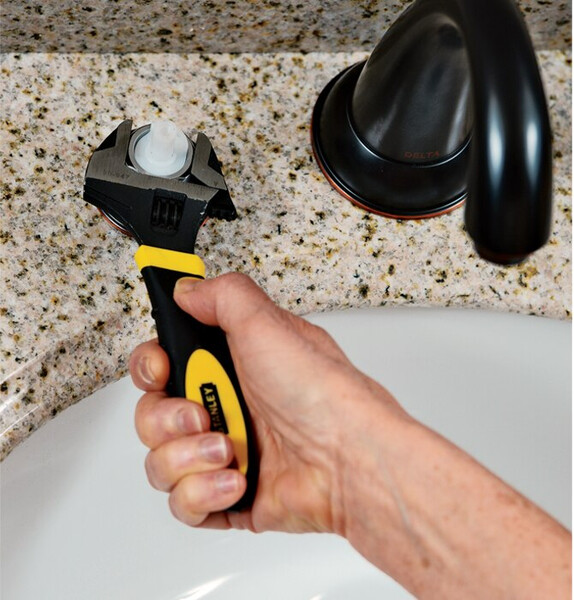How To Repair A Leaky Bathroom Faucet
SKILL LEVEL: INTERMEDIATE
A leaky faucet is an all too frequent plumbing problem that every homeowner faces. It seems too minor to go to the expense and inconvenience of paying a plumber, yet you are not sure where to start. This job does involve some squirming around under the sink, but you'll see in the steps below, there is nothing complicated about it.
Step 1: Find The Leak
To determine which faucet valve is leaking, turn off the cold-water-supply valve under the sink. If the leak stops, the problem is the cold-water faucet. If the leak doesn't stop, turn the cold supply back on and turn off the hot. If the leak stops, the problem is the hot-water valve. If not, both valves need repair.
Step 2: Remove The Faucet Handle Cap
Turn off the water at the supply valves under the sink as shown, and open the faucet valves. Use a thin blade screwdriver to pry the decorative cap off the faucet handle.

Step 3: Remove The Handle
Remove the screw that attaches the handle to the cartridge and take off the handle.

Step 4: Remove The Retaining Nut
Use an adjustable wrench to remove the nut that holds the cartridge down.

Step 5: Pull Out The Cartridge
All two-handled faucets use some kind of cartridge to regulate water flow. If the handle screws down, you have an old-style brass cartridge that presses a rubber seal into a replaceable brass seat. On newer faucets, you'll find a plastic cartridge that slides over a rubber seat with a spring beneath it. Whether your cartridge is old-style (brass) or newer (plastic), the sequence for disassembling your faucet will be essentially the same.
Pulling out the cartridge usually requires no tools. You might have to grab the cartridge with pliers and jiggle it a bit if it is stuck.


Step 7: Reassemble The Faucet
Replace the parts that came with your repair kit, then simply reverse the steps above. Make sure the raised area at the top of a plastic cartridge is facing in toward the spout.

Recommended Tools For This Project
article disclosure
To reduce the risk of personal injury and property damage, read and follow all related product manufacturers instruction manuals and information before performing any of the applications shown. Some construction-related applications shown may not be allowed in your local area. Consult your local authority having jurisdiction (AHJ) before starting work for information on permits, applicable codes, and other regulations. STANLEY disclaims any responsibility for any damage to property or injury to persons as a result of misuse of the information provided.



